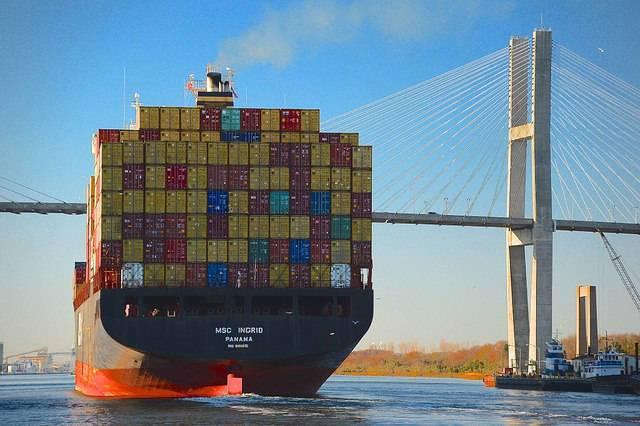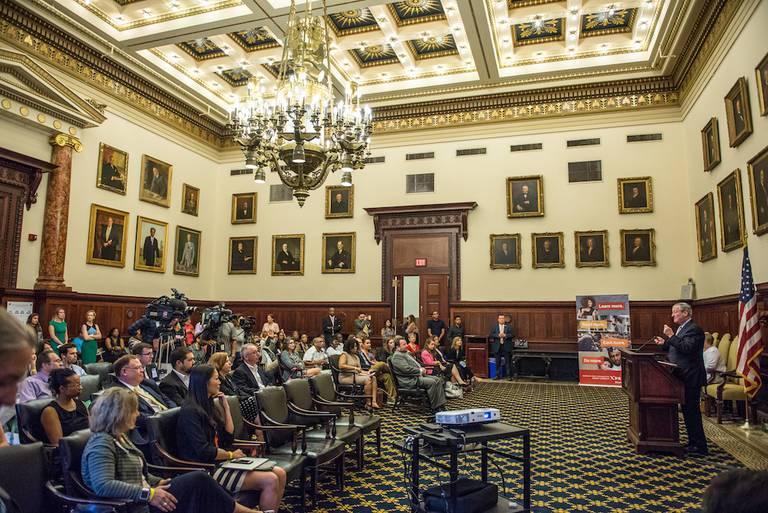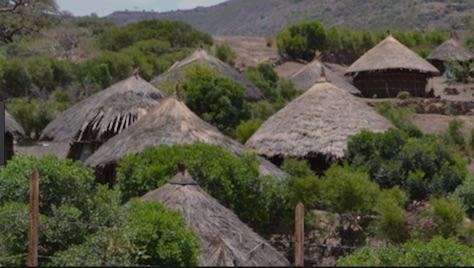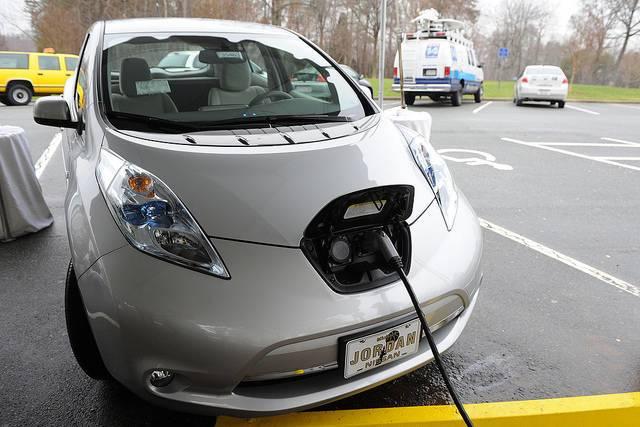CSR in Transportation: Reducing the Carbon Impact of Shipping


By Megan Wild
Businesses that cut down on their supply chain's carbon emissions are doing a great service to the environment, as well as providing their own business with a PR boost and potential cost savings in the long-term. Although cutting down on environmental impact can entail significant changes to supply chain and packaging methods, an effective measurement of your company’s transportation carbon footprint and gradual consequential steps can go a long way in ultimately curbing the environmental impact.
Five ways to “green” your supply chain include:
1. Measure your company’s transportation carbon footprint
Before digging into the number of ways to "green" your supply chain, it's important to figure just how much of a carbon footprint you're already creating. Doing so can help you determine where you're producing the most emissions, which is the first step to reducing them. The Green Freight Handbook, available for free from the Environmental Defense Fund, is an excellent guide with straightforward formulas to calculate your carbon footprint.
If you notice too much of a carbon footprint coming off your air and truck transit, it's worth considering the greenest way to ship: via ocean freight. For example of ocean freight superiority, the World Shipping Council found that a shipment from Australia to Long Beach, a distance of 8,000 miles, produced less of a carbon footprint than trucking similar goods from Long Beach to Dallas, for a total of 1,500 miles.
Another option is AWS (All Water Service). Although this may result in longer deliveries, it means that the goods will be on the water for its entirety, as opposed to tacking on a carbon footprint by being transported from the water to a truck or air. Using a combination of delivery methods to reach the destination, as opposed to AWS, will be faster, though it will certainly contribute more of a carbon footprint.
2. Avoid air freight
While it may not be impossible to avoid air freight all of the time, cutting down air transit use is highly recommended if you care about your carbon footprint. Air freight has the highest carbon emissions, a whopping 40 to 50 times more than ocean transportation.
If a lucrative client values a prompt delivery above all else, then air freight may be your only option. Still, if you have some viable transit options, avoid going with air, instead opting for something like used trucks. Used trucks are still powerful and fuel-efficient. Air freight's impact on the environment is very significant.
3. Aim for FCL (full container loads)
Opting for full container loads (FCL) instead of less than container loads (LCL) results in faster transit. It's also less likely to result in damaged goods, as the items have less room to shift around.
Most importantly for the environment, one large load produces less of a carbon footprint than several small loads. Consider looking into Buyers Consolidations among international freight forwarders, as they can help consolidate shipments into an FCL by gathering various shipments.
4. Analyze your packaging process
How you organize your packaging can play a prominent role in its carbon footprint. This varies based on the items sent.
For example, shipped soccer balls or footballs can be deflated to save space. Additionally, use packaging materials with minimal carbon footprint, including recyclable and biodegradable materials. Beyond the carbon emissions, these materials are less likely to harm animals and nature that comes into contact with it.
5. Strive for reduced carbon emissions, not zero
Zero carbon emissions may be a possibility one day, though the shipping industry at its current state makes it impossible to avoid entirely. As a result, businesses should strive to reduce carbon emissions, rather than fully eliminate them. Prompt deliveries remain a priority for specific clients, so certain undesirable shipping methods will remain.
Another option for businesses is to purchase carbon offsets and credits, a tradable permit or certificate representing the right to use a certain amount of carbon dioxide or another greenhouse gas. Its aim is to curb greenhouse gas growth, especially in countries where greenhouse gas emissions are capped. There is no such cap in the United States, though companies can certainly purchase carbon offsets voluntarily if they’re serious about reducing their carbon footprint.
These five tips can aid tremendously in reducing a business’ carbon footprint so they can help the environment and satisfy customers who prioritize the issue when deciding which companies to use.
Megan Wild is an observer of the construction industry and writes about her adventures in home improvement on her blog, Your Wild Home. You can find her tweeting about the construction industry and design ideas on Twitter.
Fielding An X Prize for Adult Literacy


More than 36 million American adults read at a third-grade level or below. Their stories are diverse: Some struggled due to learning difficulties. Some ended up in the criminal justice system early and never went back to school. Some are immigrants learning English as a second language. And others simply never had access to the tools they needed to succeed.
Collectively, low literacy skills cost the United States an estimated $225 billion in lost productivity and tax revenue each year. And it adds $230 billion to the country’s annual healthcare costs, according to the American Journal of Public Health and the National Council for Adult Learning.
Simply put: Due to low literacy, nearly 18 percent of America's working-age population is relegated to low-skill, low-pay positions by default. This all but eliminates their chances for upward mobility, and it can hinder their children as well -- further diminishing the worker pipeline for the 21st century. "Low-income kids hear 30 million fewer words than richer kids," said Elliot Weinbaum, who directs the education program at the Philadelphia-based William Penn Foundation.
Working multiple jobs to make ends meet leaves less time for parents to spend with their children, and parents with limited vocabularies also teach their children fewer words. Known as "the word gap," this phenomenon is well established, but the capacity to address its root cause -- low adult literacy -- is severely lacking. "Right now, [the United States] only has class capacity for 5 percent of the 36 million adults who lack basic literacy skills," said Shlomy Kattan, senior director of the Barbara Bush Foundation Adult Literacy X Prize.
Formed under the famed X Prize umbrella, the Adult Literacy X Prize aims to fill this gap by challenging design teams to develop mobile apps that increase adult literacy skills. The $7 million challenge brings X Prize together with the Barbara Bush Foundation for Family Literacy and the Dollar General Literacy Foundation.
Apps developed by eight semi-finalists will be tested in Los Angeles, Dallas and Philadelphia, in partnership with city governments and community organizations like the William Penn Foundation. The apps will reach 12,000 adult learners over 15 months and collectively represent the largest program in America for this level of adult literacy.
Overcoming barriers to success
Adult learners face unique barriers to success, Kattan told 3p last week at a launch event in Philadelphia, where X Prize will partner with the city's Office of Adult Education. "Fifty percent of adult learners who sign up for a program quit within 12 hours of their first class," he explained. "It's inconvenient. These learners have jobs and families."
Although programs try to work around people's schedules, it's not always enough, Kattan said. "Sure, you can take night classes. But it's hard at the end of a long work day, or it becomes a choice between putting your child to bed or going to a class."
By developing apps that learners can use any time -- and field-testing them to see which model yields the best results -- the Adult Literacy X Prize is poised to address both the lack of class capacity and the even more significant hurdle of fitting into adult learners' busy lives.
"People often don't know where to go, or the place they need to go is not convenient," said Denine Torr, senior director of community initiatives for the Dollar General Literacy Foundation. "This concept removes that barrier."
Ira Sockowitz, CEO and founder of Learning Games Studios, a semi-finalist in the X Prize, agreed. "Many adult learning classes have long wait lists, it's inconvenient and learners have to go to them. A mobile game goes wherever they go."
A new method of learning
Teaching adult learners is not the same as teaching children -- a fact many program developers forget. "It's important to focus on the practical," said Jessica Rothenberg-Aalami, CEO of Cell-Ed, another semi-finalist. "We teach skills that learners can use right away in restaurants or on public transportation, not farm animals or alphabet sounds."
This may sound obvious, but Kattan told us child-centric programs appear more often than you'd think -- and this mistake can quickly disengage learners and leave them feeling defeated. "On an individual level, adult learning is about human dignity," Kattan explained, "and kid-centric content is a quick way to end that aspect of the work."
Mobilizing the power of tech
The public tends to characterize adult learners as "others," Kattan told us, which is part of the reason they have remained underserved for so long. But they're just like every other American who struggles to balance self-improvement with a busy work and family life. By addressing this challenge head-on, rather than using it as an excuse not to serve this community, social innovators can begin to change realities that have persisted for decades.
"We believe in the power of technology to overcome access barriers," said Tim Gage, SVP of government affairs for Comcast and a member of the Barbara Bush Foundation Board of Directors. "It's certainly not a lack of desire that keeps adult learners from pursuing education."
Learners are already using the semi-finalist apps in Dallas, Los Angeles and Philadelphia. Following 12 months of consistent use, a post-test will determine the highest gains in literacy achieved by the participants. You can check out the eight semi-finalists and their concepts here.
Image credit: Bradd Eales/X Prize
Earth Overshoot Day: Living Large in a Crowded World


To gain practical skills for sustainability management, join us at the COMMIT! Forum in DC October 11-12 2017
Buying on credit
Today is Earth Overshoot Day. As of today, the year is done for planet Earth, she has given a year's worth of natural resources. It may seem counter-intuitive at first. Obviously, we aren’t done with 2017 yet. How can we take more than the Earth makes, for decades on end?
Have you ever run out of money before running out of month? If not, pat yourself on the back. You know how to consistently manage your resources. For the rest of us, we borrow against our future ability to fill in the gaps, keep things flowing. What about running out of Earth before running out of year? We all do that.
So what happens now?
We go into debt, dig into nature’s future ability to regenerate what we take. More carbon emitted than can be absorbed, more topsoil eroded away than can be restored, more water pumped out of aquifers than can be recharged.
Current patterns of production and consumption externalize much of the actual cost, most notably the cost of depleting natural capital or biocapacity. Measuring ecological footprint against the biocapacity of an area determines ecological overshoot. Globally it takes the regenerative resource capacity of 1.7 Earth’s to meet human demands.
The economics of biocapacity
Earth Overshoot Day is hosted by the Global Footprint Network, a research organization focused on "changing how the world manages its natural resources and responds to climate change. TriplePundit recently spoke with Dr. Mathis Wackernagel, co-founder and CEO of GFN, to learn more about Earth Overshoot Day, his work, and his philosophy of how to live in a world of constraints.
Wackernagel laid the groundwork for the ecological footprint for his doctoral dissertation. The ecological footprint metric was further developed, the metric is the foundation for Earth Overshoot Day and, more importantly, Global Footprint Network’s ongoing collaboration with business leaders, countries, cities and regions, more than 70 global partners in all. GFN's work establishing its core database of "National Footprint Accounts" and their open-source public data platform demonstrates the collective self-interest in preserving natural capital.
“We’re trying to show two key things,” says Wackernagel:
First is understanding that, beyond the fossil fuels that now seem so crucial to our existence, the “ultimate resource” upon which humanity depends is Earth’s renewable capacity. The highest value is Earth’s ability to absorb carbon and renew itself. We call it the natural carbon cycle. Global Warming is a function of more carbon in the atmosphere than can be absorbed. Which is to say, the issue is not the carbon itself but our use of it.
Second, by looking at the world from the perspective of countries as farms, the “self-interest becomes more obvious,” Wackernagel says.
Tied to the land
Both biocapacity and ecological footprint are expressed as global hectares. A "global hectare" is a hectare of "biologically productive land and sea area with world average bioproductivity."
In other words, we are all, ultimately, tied to the land. A modern, industrialized, resource intensive country or economic sector’s ability to compete is weakened by diminishing biocapacity. Like a farmer's soil turning fallow.
"Countries in a world that uses more and more resources aren’t resource secure themselves, they put themselves more at risk,” Wackernagel says.
“It’s fundamentally linked to the self-interest of each nation and city to recognize the context and accordingly invest.”
Wealthier countries can and do outrun their risk “in the short run,” says Wackernagel, by having more income than others. In the long run, however, not everybody can have more income than others.“It puts more and more pressure on a limited resource. It puts everybody at risk”
Any economic entity - from individuals to nations and global economies - not fully and accurately assessing its costs eventually becomes overextended. Something has to give.
An engineer's invitation
Wackernagel considers himself and his colleagues as "engineers of sustainability," sorting out for the rest of us how to conceptualize and quantify biocapacity and ecological footprint. From there we can "build a bridge."
“I’m an engineer,” Wackernagel says (he earned his degree in mechanical engineering from the Swiss Federal Institute of Technology). “I believe in the possible… boosting a vision about hope, not the bad seed of despair.”
Calculating Earth Overshoot day isn't all that complex, says Wackernagel. What is complex, he says, is “how to solve it… because many people think it’s a tragedy.”
“In terms of building the bridge and winning everybody’s participation, we have to frame the conversation as an invitation, not as a lens. We need to have everybody’s success in mind. Not ‘you’re good or bad’ or whatever. The moral language can push people off.”
We're all tied to the land, we're all in this together. Is our world really manageable by adhering to simple platitudes? Perhaps more than we realize.
“What the hell is water?”
Humanity went into global overshoot in the early 70s, before many people reading this article were even born. In fact, between 1975, considered the first year of overshoot, and today, about 3.4 billion people have arrived. Nearly half of the global population is born into an overburdened planet.
It’s like the story of one fish asking another, “how’s the water?” The other fish replies,”what the hell is water?” We are swimming in a world that is only “normal” to us: here, now (and even that is arguably not so normal anymore).
David Foster Wallace explains it best in This is Water:
“The immediate point of the fish story is that the most obvious, ubiquitous, important realities are often the ones that are the hardest to see and talk about. Stated as an English sentence, of course, this is just a banal platitude — but the fact is that, in the day-to-day trenches of adult existence, banal platitudes can have life-or-death importance.”
It is often hardest to see things as they are when they are right before us. History is replete with examples of civilizations overshooting their resource base, leading to collapse. The Romans, the Mayans. In hindsight, we can see how they overextended, yet it is difficult to recognize the same thing in our own time.
The essential bottom line
Global Footprint Network defines biocapacity as “the ability of an ecosystem to regenerate biological resources and absorb wastes generated by humans.”
Ecological footprint measures the “amount of biologically productive land and sea area required to produce all the resources a population consumes and to absorb its waste.
Formula: PB/EF X 365 = Earth Overshoot Day
where PB = planetary biocapacity and EF = ecological footprint
Photo by Mike Wilson on Unsplash; Infographic courtesy of the Global Footprint Network
Lloyds hackathon challenge inspires collective citizen impact


By Sangeeta Waldron — Our societies need thriving young people - children and young adults who want and are able to positively shape the world around them. They need opportunities to develop as people and citizens, to create their own path and a positive personal identity to develop empathy so they can live and contribute alongside others.
The students in Years 7 to Sixth Form from Woolwich Polytechnic had that opportunity! They recently took part in an annual hackathon challenge from Lloyds Banking Group to produce digitally-based ideas to help their local community tackle mental health problems. The initiative, with the support of Cisco Innovation Labs, saw 30 students from the school address the challenging topic of how digital technology can support mental health and wellbeing.
The hackathon challenge was in support of the Group’s partnership with Mental Health UK. The two-year charity partnership aims to promote awareness of the link between mental health and money problems, encourage discussion between customers and colleagues and raise at least £2 million per year to launch a pioneering Mental Health and Money Advice Service.
In the UK, one in four people will experience a mental health problem each year and in England, one in six report experiencing a common mental health problem, such as anxiety and depression.
While the overall number of people with mental health problems has not changed significantly in recent years, the worries about things like money, jobs and benefits can make it harder for people to cope. What is clear, is that how people cope with mental health problems is getting worse, as the number of people who self-harm or have suicidal thoughts is increasing.
Based on this mental health knowledge, the students were asked to develop digitally based ideas that would make a real difference to people locally.
The students were spilt into four teams that worked together to create a competitive pitch, which were independently judged in a Dragon’s Den-style presentation at Lloyds Banking Group headquarters. All of the pitches were to a high standard with sophisticated solutions, but the Lloyds Banking Group Dragons thought the winning idea was an information and social support app that focuses on providing those experiencing poor mental health with expert advice and guidance. The app by the winning team, Universal Aid, does this through interactive content and through engagement with both professional services and a community of people who have endured similar problems, including celebrity endorsement.
Lloyds found all the ideas put forward to be mature and of a high quality. The Innovation Labs have allowed the students to showcase how digital transformation and the Internet of Things can improve mental health in their community.
This hackathon challenge is not just a solid example of how technology is triggering social change, but it also reflects a growing trend: collective citizen impact where citizens, particularly students, are hacking socio-economic problems — whether local, regional or global.
Photo Credit: Lloyd's Bank
Bringing resources to bear to improve global health


Tetra Pak aligns its environmental goals with Paris Climate Agreement


Former UK Education Secretary Michael Gove’s assertion that “people have had enough of experts” came to symbolise last summer’s Brexit referendum debates. But when it comes to the business response to global warming, it is the experts – in this case, the climate scientists – that are starting to set the agenda.
2016 saw a concerted effort by companies to adopt science-based targets for reducing corporate carbon emissions – goals which, if met, will keep the average global temperature increase below the 2°C threshold beyond which most experts claim the world will face irreversible catastrophe.
More than 265 companies have so far committed to setting such targets, a figure that is only likely to grow, according to the results of a survey carried out by edie.net. To date, 198 companies have submitted targets for validation; only 44 have had their targets approved, among them Tetra Pak.
Among those companies – and leading the charge within the food packaging industry – is Tetra Pak. The company, which was established back in 1951 and now present in more than 175 countries worldwide, has pledged that by 2030, the greenhouse gas (GHG) emissions from its own operations will be at least 40% lower than they were in 2015.
Working in partnership with the Science Based Targets (SBT) initiative, which checks, verifies and approves the target-setting process to ensure it is in line with the best available science, it has also set a goal that by 2040 GHGs will be down 58% compared with a year ago.
Many businesses have already shown they have the skills and ingenuity to both cut their negative impact on the planet while continuing to grow. Tetra Pak is keen to show that its efforts are absolutely in line with the collective global requirement to take climate change seriously. Aligning with current climate science allows the business to play its role in limiting global warming to well below the 2°C limit as established by the Paris Agreement. The business was the first packaging company to complete the SBT target review process.
“We have been setting climate goals since 2005 and already had a climate goal as part of our 2020 corporate strategy. But the SBT offered us a chance to go beyond this and set targets that are more long term,” says Mario Abreu, Tetra Pak’s VP for environment.
To reach both the mid- and long-term goals, the business will focus on three areas to reduce its operational impacts. First, it will continue to find more efficient ways of using energy, cutting its use by a further 12%.
Second, it will purchase electricity from renewable sources, investing in renewable energy projects and renewable electricity certificate schemes. And lastly, it will add to the 1MW of renewable energy capacity already installed on its sites around the world, investing in more onsite systems such as solar panels.
On top of this, the company has committed to also reduce GHG emissions across its value chain by 16% per unit of revenue by 2020 from a 2010 base-year, selling equipment and packaging to customers that enables them to also reduce their own carbon footprint.
“How we invest in solar systems is still not perfect. Yes, the cost per kilowatt of energy has come down a lot – and with more and more companies committing to buy solar panels, the price will go down further. But we need solar to become much more competitive with regular energy,” adds Abreu.
However, the beauty of setting such long-term climate goals is in helping to secure the R&D budget to unlock innovations that will take energy efficiency to another level. Continuing to make the equipment it sells to customers more efficient is crucial to this, as is the company’s ongoing experiments to collaborate more with others, especially in making clean energy certificate schemes and power purchase agreements work for the benefit of everybody.
“The need to find better solutions is underpinned by our science based target,” says Abreu, pointing to the range of new cartons and packages that have been introduced to Tetra Pak’s portfolio in the last couple of years. Doing away with traditional fossil fuel-based polymer plastics and replacing them with bio-based alternatives continues to reduce the carbon footprint of its packaging. The recently launched Tetra Brik Aseptic Edge 1000, which comes with layers of bio-based polymers and a bio-based closure, is the first package of its kind for products that will not need to be refrigerated and contains more than 80% renewable materials. “But the work doesn’t finish here, we will continue to expand our portfolio with packaging that has increasingly more renewable material,” says Abreu.
“The challenge is to make sure consumers understand the advantages of relying less on fossil fuels. That is the journey we are on.”
As such, the United Nations Sustainable Development Goals have been a useful mechanism in establishing priorities and understanding where the business can have the greatest impact. No company can truly align with all 17 goals. But by understanding them all – and getting to grips with the 169 specific targets established within – Tetra Pak is more confident about where it can best play its role in responding to today’s greatest social and environmental challenges. “We recognise as a company, this is not about us trying to fix all the problems. But by focusing on some of the SDGs we can establish some concrete objectives.
“For example, SDG 15 is about safeguarding life on land. We might not own or manage any land or forests, but we can certainly contribute with our forestry and biodiversity programmes, making sure forests remain spaces for indigenous communities, for example. We have a chance to make an impact because of our value chain.”
Acknowledging that collaboration is likely to be crucial in achieving its ambitious goals, adopting the SBT approach gives Tetra Pak a chance to be part of a ‘club’ of like-minded businesses. “By committing to science, the SBT helps by setting an ambition with benchmarks for a sector. Whilst the path will be different for each business, we are collaborating towards a common end goal,” concludes Abreu. “And if everybody does their share, we will all get to where we need to go”.
The Singapore Sustainability Academy launches as training and networking hub


California Regulators Approve $200M Volkswagen Zero-Emission Cars Investment


Late last week, the California Air Resources Board (CARB) announced that it had approved the first of four plans for Volkswagen to invest $800 million in zero-emission infrastructure, outreach and electric vehicle access for citizens who live in disadvantaged communities. The first phase, which will total approximately $200 million, will be used for various projects including an increase of electric car charging stations and even zero-emission ridesharing programs within the Golden State.
CARB researchers had been instrumental in holding Volkswagen accountable for the diesel emissions cheating scandal that rocked the company, and the global automobile sector, almost two years ago. The fallout over the company’s “defeat devices,” installed in order to shirk mandated emissions testing in many automobiles, led to countless class-action lawsuits and cost Volkswagen tens of billions of dollars in fines and vehicle retrofits. Backlash targeted at diesel vehicles, long touted to be more efficient while expelling fewer emissions, has continued - the United Kingdom, for example, recently announced a long-term ban on diesel (and gasoline) fueled vehicles.
Data suggested that many of California’s poorer air quality concentrates in the state’s poorer communities, and therein lies where much of Volkswagen’s work in California will unfold over the next several years.
The automaker established a subsidiary, Electrify America, which will oversee much of Volkswagen’s $2 billion investment in zero-emission vehicle infrastructure across the U.S. The organization has chosen Sacramento as one of its first of “Green Cities,” in which it will launch various zero-emission vehicle initiatives that seek to improve access to local residents while offering them a better quality of life via improved mobility options and improved air quality. A second Green City will be selected by Electrify America during a later phase of the program.
The CARB-Electrify America partnership will complement similar state programs, which seek to increase the number of electric vehicle charging stations and zero-emission public transportation in poorer state regions such as the San Joaquin Valley. In addition to Sacramento, other underserved communities expected to benefit from this program will be in Fresno, Los Angeles, San Francisco, San Jose and San Diego.
The argument for focusing on poorer neighborhoods is that they are often located near the state’s busiest intersections and freeways - and at the same time, few consumers will buy an electric car if they cannot find a place to recharge it. To that end, CARB had instructed Electrify America to resubmit its proposal earlier this year, saying its plan to be more inclusive of disadvantaged neighborhoods did not go far enough; as a result, Fresno, the state’s fifth-largest city (and one notorious for bad air quality), was added to the zero-emission plan’s mix.
As this plan expands over the next decade, Electrify America expects 35 percent of these programs to launch in poorer communities - necessary if electric cars and infrastructure will ever become truly “mainstream” and be part of the transportation fabric in areas outside wealthier enclaves in the Bay Area and Southern California. Watch for more charging stations to appear at locations including neighborhood community centers, multi-family residential complexes, commercial and retail locations, office parks and municipal parking lots and garages. In the meantime, Volkswagen and Electrify America say they seek proposals nationwide for zero-emission vehicle programs and electric car charging stations.
Image credit: NCDOT/Flickr
Corporate America Already Laps Military With Transgender Protections


Last month's surprise executive order by President Trump banning transgender individuals from serving in the U.S. military "in any capacity" was heartbreaking for many. According to Trump, "tremendous medical costs," were a key reason for the ban, a point that has been proved inaccurate by recent studies by the RAND Corporation.
It's unclear how many enlisted members are actually affected by Trump's executive order, since census data doesn't currently identify transgender status. But according to the study, there is between 1,300 and 6,630 individuals that would be affected by the edict. That's a small number when considering the total size of the military -- 1.3 million -- so the president's concern seems confusing when compared to the $138 billion that the government paid out this year for veterans' medical care and the additional $17 billion that Congress is considering right now.
For the purpose of the study, researchers settled on two mid-range numbers for the total estimated transgender members serving in the active military (2,450) and the Selected Reserve (1,510).
It also determined that only a small number of those two groups would actually request gender-transition medical care. Insurance claims suggest that's less than 130 members per year.
Doing the math, researchers found that at the most health care costs would increase between $2.4 million and $ 8.4 million. To put that in perspective, that's less than three Trump golfing weekends in Florida or New York. It's also a drop in the bucket when considering the amount the military pays out for Viagra treatments for troops and veterans.
The Military Times determined in 2015 that the Department of Defense paid more than $41 million for Viagra alone ($84 million for dysfunction treatments in total related to combat-related injuries, including veterans' Agent Orange exposure), knocking the cost of transgender treatment off the table.
Still, those statistics are of little help to transgender individuals who fear for their job security.
And most likely, they'll find things are a bit different in many parts of Corporate America.
According to Human Rights Campaign"s 2015 Corporate Equality Index, 66 percent of Fortune 500 companies don't see LGBT (lesbian, gay, bisexual and transgender) rights in the same vein as the Trump administration. They have already implemented policies to protect against gender discrimination -- and transgender employees are covered under those protections.
HRC's 2017 Corporate Equality Index survey results:
- 82 percent of Fortune-500 companies that have gender-identity protections in place, up 16 percent from 2015.
- 50 percent of Fortune-500 companies offer "gender-inclusive" healthcare. 73 percent of companies surveyed in general offer that benefit.
- 515 companies surveyed in total earned a rating of 100 percent for their transgender-inclusive policies. "This is the largest jump in top-rated businesses in a single year in the entire history of CEI," the organization notes.
Education about transgender rights and protections is up as well, says the organization, which found that 86 percent of CEI-rated companies now offer education and training programs "that specifically include definitions and/or scenarios on gender identity in the workplace."
That's good news for both companies and the government's new cadre of LGBT ex-military. "These reflect low-cost, high yield investments in major businesses’ talent as well as in their broader profile as forward-looking, responsible businesses," says HRC.
It also reflects humane and sensible values that will carry businesses forward as American corporations adjust for the country's increasingly diverse workforce.
Ben & Jerry's Clickbaited by Organic Consumers Association


Ben & Jerry's ice cream has become synonymous with quality in recent years, and I am not just talking about taste. The ice cream company is known for taking a stand on ethical issues. Their voices (and their ice cream) have become symbols of issues relating to everything from drilling in Alaska's Arctic wilderness to foods from cloned animals and genetic engineering (GMOs).
So this last week's news from an organic activist organization was a bombshell. Private testing revealed traces of glyphosate in some ice cream samples. According to the Organic Consumers Association, "[ten] out of 11 samples tested positive for Roundup (glyphosate and AMPA) herbicide contamination."
The organization has been after Ben & Jerry's to transition its supply chain to organic products for some time, and says the company should put its money where its mouth is (or in this case, its ice cream scoop).
"For 20 years, activists have played nice with Ben & Jerry’s, politely making the case that the company should live up to its claims of 'social responsibility' and all that that expression promises," OCA said in a recent newsletter." The fact that the company doesn't use organic milk, the activists say, is evidence that Ben & Jerry's is disingenuous and is "scamming consumers."
Is it? According to Euromonitor, Ben & Jerry's global revenue in 2015 was $1.23 billion. By Sept. 2016, its sales had grown to $1.32 billion (Statistic Brain), with more than 5,800 purchasing locations across the world. Surely the consumers who helped to make it a household name in big box stores and niche markets over the past 30 years are aware that Ben & Jerry's confections aren't made with organic milk.
But OCA apparently isn't looking for statistics -- or not the ones that speak about the ice cream maker's popularity at least. They are looking for impact.
And that's just what they got last week when the news of their sample testing was picked up by the New York Times and run as a headline story.
For its part, the NYT did interview a Ben & Jerry's representative and did point out that the amount of glyphosate was "indeed small." But as an informational article about scientific testing and what those results might mean, it left a lot out, says Dr. Kevin Folta, a professor in horticultural sciences at the University of Florida.
Folta, who writes for the Genetic Literacy Project, wasn't the first to question the NYT's approach to this story, which he points out failed to include basic information like links to the scientific report, information about how the tests were done or the fact that testing milk-based products accurately for glyphosate can be "incredibly difficult."
"Ice cream is complex stuff, and each type of ice cream will have to be treated individually to understand the baseline for the matrix, as well as other interfering molecules. There is no evidence that they did this," or how it was done, given that the tests can take "weeks to months," said Folta. He goes on to mention a number of other scientific holes, like the absence of a control group and independent testing, that you and I, concerned about the quality of our food and where our money goes, would likely not notice.
OCA, however, says it is committed to its goal to "force Ben & Jerry's to go 100% organic." And to do that, it's turning to the recently tried-and-true method of calling for a widespread boycott of Ben & Jerry's ice cream.
It's lined up cities across the nation, from New York to Los Angeles, to organize "Dump Ben and Jerry's" protests with the aim of forcing the company to convert its milk source to organic brands.
Boycott and divestment strategies have become a popular way of snagging the attention of large companies that don't understand or don't take into account the interests of their consumers. The DefundDAPL protests, which resulted in cities and private citizens pulling their money out of banks that funded the Dakota Access Pipeline, is perhaps the most recent example of citizen advocacy.
But is the boycott and divestment of an ice cream company really the same?
Is Ben & Jerry's, which has become an advocate itself for ethical sponsorship, likely to bow to a widespread boycott and to do so without clear, impartial evidence of its wrongdoing? And should we really expect it to?
Ironically, a boycott works because the companies it targets are large enough not to fail. In most cases, the consumers and cities that withdrew their business from Wells Fargo and other funders of the DAPL project weren't looking to kill off a banking institution. They were looking to change minds about where money was invested and the way that shareholders saw their relationship to consumers.
But there's a difference in changing investment strategies and undermining the worth of a business' brand and product. Labeling an ice cream manufacturer as dishonest and "scamming" consumers based on hidden testing methods doesn't teach a company a lesson about the value of organic products. It destroys trust and potentially, future growth.
"[The] overarching goal [of the OCA's effort] is to sneak a clickbait title in front of the public, knowing that the story of poison in your food gets readers, fulfills an activist agenda, and most of all spreads fear of perfectly safe food," said Folta, who admits up front that he supports organic food production.
As for Ben & Jerry's the company has acknowledged the OCA's announcement of glyphosate in the ice cream and has come back with some statistics. They aren't, perhaps, what diehard fans would want to hear, but they are an honest portrayal of the industrialized world we live in today.
"At Ben & Jerry’s, we were concerned to learn that recent testing revealed trace levels of the herbicide glyphosate in several of our flavors. Concerned, but not totally surprised. It’s everywhere from mainstream food, to natural food, to rainwater and that’s a problem," notes the company.
To put that unsavory fact into perspective, the owners explain, consider the following stats:
- The trace amounts of glyphosate found in each of the 10 samples that tested positive for the chemical had between 0 and 1.74 parts per billion.
- In comparison,he amounts found in organic whole wheat bread tested by the Alliance for Natural Health USA were 78 times greater than those readings.
- Non-organic whole-grain oat cereal contains more than 600 times the amount that was found in Ben & Jerry's ice cream sample.
The company still advocates and insists upon a supply chain that is non-GMO.
What also wasn't noted in the Organic Consumers Association's press releases (or the New York Times' article) is the presence of glyphosate drift: the challenge of protecting non-GMO-sourced food from pesticides already in the environment.
"Glyphosate is one of the most widely used herbicides in agriculture and is one of the most pervasive chemicals in our food system," said the company. As would be expected of Ben & Jerry's, it's working on finding out how the chemical entered its supply chain.
Flickr images: Ben Ramirez; Steam Pipe Trunk Distribution